Genre is the category used to group books that share similar subject matter, style, and readership, each with its own genre expectations. Broadly, all books fall into three areas:
- fiction
- non-fiction
- children’s books
How many book genres are there?
The world of literature is vast and ever-changing, making it difficult to pin down an exact number of book genres. As new genres emerge and others blend together, the landscape of literary categories continues to evolve. However, it’s estimated that there are around 50 distinct book genres. This number isn’t set in stone, as genre boundaries can be fluid, and innovative writers often create hybrid genres that defy traditional classification.
Whether you’re drawn to the imaginative realms of science fiction or the introspective narratives of literary fiction, the diversity of book genres ensures that there is something for every reader.
Non-fiction genres
Non-fiction includes:
- business
- food and drink
- health and lifestyle
- history
- memoir
- biography
- science
- technology books
- sports
Fiction genres
Core genres here include:
- action and adventure
- crime and thriller
- fantasy, horror, and science fiction (sci-fi)
- literary fiction
- poetry
- romance
- historical fiction
Genres for children of different ages, such as 8–12 or Young Adult fiction (for 13+), include:
- picture books
- fiction
- non-fiction
You’re probably writing in one of these fiction genres or quite possibly a subgenre—a smaller, more specific genre inside the broader genre. Additionally, hybrid genres have become increasingly popular, combining genre elements to create new storytelling experiences.
For example, romantasy is a subgenre of fantasy, and saga is a subgenre of historical fiction. Space opera is a subgenre of science fiction, which can be further divided into hard sci-fi (emphasizing realistic science) and soft sci-fi (exploring imaginative possibilities without strict adherence to scientific laws), both exploring questions of identity and what it means to be human.
.avif)
Why does genre matter?
Your genre should be one of the first things you think about if you’re aiming to get published. It’s the first thing literary agents consider when they decide whether they want to represent you!
They’ll be checking that you’ve used the right ingredients for the genre you’ve placed yourself in. Science fiction stories, for example, are rooted in science and technology, differentiating them from fantasy, which relies on magic.
Additionally, publishers acquire novels according to their literary genres. Their departments are divided into specialists in each literary genre.
Why? Because:
- Bookstores are also divided into retail sections by genre.
- Readers buy books based on their reading preferences.
- Readers know what they like, and like what they know.
Expectations in book genres
Many genres come with certain ‘expectations’—for example, a murder mystery wouldn’t be particularly satisfying without a murder! It helps to know your genre when you’re writing and editing the novel, as you can keep those expectations in mind during the creative process and perhaps subvert some of them for added wow factor. Your genre will likely influence your characterization, plot, setting, word count, and more. Plus, certain genres tend to have similar treatments. For example, suspense thrillers are often written in first person.
Genre can be make-or-break when it comes to agent representation and publication. Your publisher will be thinking of genre when coming up with your marketing and publicity campaigns to ensure they reach the right readers. Your cover designer will be thinking about it, too—you wouldn’t expect to see an image of battle-crazed Vikings on the cover of a contemporary YA romance (although stranger things have happened).
.avif)
The core book genres
Romance
Novels about a romantic relationship between two people. They are characterized by sensual tension, desire, and idealism. The author may keep the two key characters apart for most of the story, but they eventually end up together. Subgenres of romance novels include paranormal, historical, contemporary, category, fantasy, and gothic.
Action adventure
Any story that is plot-driven with characters seeking a specific goal and overcoming numerous physical obstacles to achieve it. The protagonist is often in physical danger. Set pieces involve thrilling near-misses, and courageous, daring feats are likely in this genre. It’s fast-paced, the tension mounting as the clock ticks, and the setting changes often, usually across exciting and interesting locales. There is always a climax that offers the reader some relief.
Contemporary fiction
A genre that explores the complexities of modern life and society, often focusing on the everyday lives of ordinary people, their struggles, relationships, and experiences. It can be set in any location across a wide range of themes, from family dynamics and relationships to social issues and politics.
This genre is characterized by its realistic portrayal of modern life, often incorporating elements of literary fiction, such as complex characters, themes, and language. The wide range of characters and plotlines makes it a versatile and dynamic genre.
.avif)
Paranormal/ghost/gothic
Stories that deliberately upset the norms of the world and create a sense of uncertainty and fear. Often dealing with the inexplicable, characters directly confront their fears in dangerous and alienating situations.
This book genre encompasses stories that can be high-pitched and scary, involving pursuit and escape, or they can be darkly psychological, with characters who don’t know who or what to believe. These stories take place in our own world with fear, surprise, mystery and a final twist as key elements.
Science fiction (SF/sci-fi)
Any story set in the distant future that extrapolates current technological knowledge in a plausible and internally consistent manner. For example, traveling faster than light is possible, but only via alternate dimensions, jump gates, or wormholes. These stories can involve advanced technologies and settings based in the future or space, which should define the plot.
Writers must spend time building new worlds and considering the broader implications of new advancement in humanity, society, politics, religion, and culture. There are many science fiction subgenres, such as space opera (space exploration and extra-terrestrial warfare), science fantasy, cyberpunk, military sci-fi, time travel, and climate fiction (or cli-fi). Apocalyptic and dystopian novels sometimes live here when they are set in the future.
Fantasy
Stories about the impossible and unexplained (as opposed to science fiction, which deals with the possible and plausible). Fantasy often takes place in an entirely new realm (secondary world fantasy), has characters moving between the real world and another (portal fantasy), or takes place in our own world with fantastical elements introduced (contemporary fantasy and urban fantasy).
The fantasy genre is characterized by myths and otherworldly magic-based concepts and ideas, and writers must do diligent world-building. High fantasy, including epic fantasy, involves worlds so vivid that the author often writes a fantasy series to return the reader to the world again and again. Many secondary-world fantasy books take inspiration from pre-Industrial Revolution societies; a popular subgenre is historical fantasy. There are plenty more subgenres in both adult and Young Adult fantasy fiction, including dark fantasy, science fantasy, cozy fantasy, and romantasy.
.avif)
Horror
Characters forced into life-threatening situations, confronting the darkest aspects of human nature and the supernatural within their own psyche. This genre aims to evoke fear, anxiety, and unease by creating tension and suspense. A key element is terror—the anticipation of seeing the horror directly. This can be summed up as fear of the unknown—i.e., what is making that noise in the dark (both literally and metaphorically)? Survival rather than triumph is often the character’s goal when facing this inexplicable madness.
Horror can be set in any time period around a wide range of themes and subgenres and often includes supernatural elements, as in paranormal fiction and ghost stories. For psychological horror, think Stephen King. Vampire fiction is exemplified by Bram Stoker’s Dracula, and there are also zombie stories, folk horror, and survival horror—each with their own unique elements and techniques for creating fear and tension. Gothic fiction is a subgenre that adapts fairy tales into long form, but when catering to adults, the form tends to exclude talking animals (most of the time)!
Speculative fiction
Any genre that deliberately departs from what is real, as in science fiction and fantasy, but for the most part, this isn’t the primary focus of speculative fiction. This genre is normally more literary and focuses on character and theme rather than the specifics of the speculative element.
Suspense/thriller
This genre involves pursuit and escape, and a character in jeopardy. There are one or more ‘dark’ characters the protagonist must escape from, fight against, or best. Threats to the protagonist can be physical, psychological, or both. The setting can be integral to the plot—for example, in a locked room thriller, which puts characters in an isolated situation. A big subgenre is domestic suspense or domestic noir, in which the family or home sphere is under threat, but there are other subgenres.
.avif)
Mystery/crime
Also known as ‘whodunnits.’ The central issue is a question that must be answered: an identity revealed, a crime solved. Mystery fiction is characterized by clues creating rising tension as the answer to the mystery is approached. Cozy crime is a subgenre in which the victim ‘deserves’ it—a rotten egg—and the sleuth in these mystery books may be an amateur.
Police procedurals
Mysteries that involve a police officer or detective solving a crime, resting heavily on technological or forensic aspects of police work, evidence, and the legal aspects of criminology. ‘Investigative’ stories have a similar purpose (a crime that must be solved), but the main character might not be a policeman (for example, a reporter).
Historical
Fictional stories taking place against a factual historical backdrop that may include real historical events and historically accurate details, though the story may not be driven by those. Important historical figures are portrayed as fictional characters. Historical romance is a subgenre involving a conflicted love story in a factual historical setting.
Westerns
Specifically set in the old American West, these plots include survival, romance, and adventures. Characters of the time include cowboys, frontiersmen, Native Americans, mountain men, and miners.
.avif)
Women’s fiction
Novels written for women by women. (As are most novels. We don’t love the term either, but it is a commercially recognized genre.) These novels focus on female central characters who face challenges, difficulties, and crises with a direct relationship to gender, including (but not limited to) a woman’s conflict with a man or what it is to not be a man. The conflict can include things such as the economy, family, society, politics, and religion, but there will always be a female protagonist!
Take care with character agency, ensuring things don’t happen to the women in these books, but that they drive the events of the story! There is commonly a positive result for the main characters, who are women, at the end of the narrative.
Domestic fiction
Concerned with the home, so a novel like Little Fires Everywhere might sit here. Consider what is outside the home and how that threatens what’s inside.
Saga
Historical fiction focusing on female stories of overcoming adversity, including poverty and family-related drama. Subgenres include wartime sagas involving camaraderie and friendship, and family or generational sagas, which are ongoing stories about two or more generations of the same family; these may include (or bring the resolution in) a contemporary timeline.
Magical realism
Where magical events are a part of life and the characters do not see them as abnormal or unusual, but as a natural part of the story.
Book club or reading group fiction
Novels that deal with important topical themes, potentially offering social commentary. They are relevant to contemporary society and are likely designed to inspire discussion and debate among readers with their controversial or emotionally charged issues. These may become a ‘talking piece’ (often considered preferable in marketing terms to ‘women’s fiction’).
They typically have a commercial hook or premise, but the writing can be more literary, which is why these novels are usually seen as upmarket fiction (the old version of ‘literary fiction’!) that addresses universal, elevated themes while remaining accessible to the general public.
Literary fiction
Books focusing on the human condition that are more concerned with the characters’ inner lives and themes than the plot. We tend to see crossover with genres here, with the defining moments of the protagonist’s life set against the backdrop of other genres like crime or suspense (Donna Tartt’s The Secret History), magical realism (Gabriel García Márquez’s Love in the Time of Cholera), or coming-of-age (J.D. Salinger’s The Catcher in the Rye).
Up Lit
Books where the narrative thread is redemption, often using a chronological account of a period of one person’s life and a powerful testimony to well-intentioned community action. Up Lit books include personal or social commentary that always includes good relations between humankind in the modern era, such as Fredrik Backman’s A Man Called Ove or Andrew Sean Greer’s Less.
Crossover/breakthrough fiction
What agents sometimes refer to as ‘breakthrough’ novels are those that creatively combine genres. Think of Rebecca by Daphne du Maurier—mystery, romance, crime.
The key ingredients that I look for in a fully formed breakout premise are (1) plausibility, (2) inherent conflict, (3) originality, and (4) gut emotional appeal.
—Donald Maas
Children’s fiction genres
Middle grade (MG)
Books aimed at ages 8–12. The protagonist will typically be the age of the intended reader (or slightly older) and the word count around 30–50k. MG often focuses on friends and family, showing characters overcoming problems like bullying.
The tone often includes humor and/or adventure, but MG can deal with complex contemporary issues in an age-appropriate way. There will typically not be profanity, graphic violence, or sexuality (any romance is capped at a crush or first kiss). There is a large market for fantasy MG where characters live in a magical world or have special powers and must learn how to wield them wisely.
Young Adult (YA)
Books written, published, and marketed to adolescents and young adults. A young adult is someone between the ages of 12 and 18, but adults often read these books, too. They are generally coming-of-age stories and often cross into the fantasy and science fiction genres. YA novels feature diverse protagonists facing changes and challenges. This genre has become more popular with the success of novels like The Hunger Games, The Fault in Our Stars, and Twilight.
New Adult (NA)
Stories featuring college-aged characters and plotlines. NA is the next age category up from YA and is a burgeoning ‘crossover’ genre between Young Adult and adult fiction. Protagonists are generally aged 18–30 and at college, university, or in their first jobs. These books explore the challenges and uncertainties of leaving home and living independently for the first time, and can have a focus on sexuality with a blurred boundary between romance and erotica.
{{blog-banner-4="/blog-banners"}}
Non-fiction book genres
Memoir and autobiography
These two popular non-fiction book genres offer readers a window into the author’s life. While both genres focus on personal experiences, they differ in scope and style.
A memoir is a personal narrative that delves into a specific aspect or theme of the author’s life, often exploring significant events with emotional depth and introspection.
In contrast, an autobiography provides a comprehensive and chronological account of the author’s life from birth to the present day.
Memoirs and autobiographies are cherished for their authenticity and the unique perspectives they offer. They often include anecdotes, reflections, and analyses, making them relatable and engaging. Readers are drawn to them for the opportunity to learn about the lives of others, gain new insights, and be inspired by true stories.
Biography
A non-fiction book that delves into the life of another person, offering readers an in-depth look at their experiences, achievements, and challenges. Biographies can cover famous historical figures, influential leaders, and ordinary individuals with extraordinary stories. They provide a comprehensive account of a person’s life, often based on extensive research and interviews, offering readers insight into the lives and legacies of remarkable individuals.
Self-help
Self-help books are a popular non-fiction genre that focuses on personal growth and development. These books offer practical advice, strategies, and insights to help readers improve various aspects of their lives, such as motivation, productivity, and overall well-being. Self-help books often address common challenges and provide actionable steps to overcome them, empowering readers to make positive changes.
Examples of influential self-help books include The 7 Habits of Highly Effective People by Stephen Covey, which outlines key principles for personal and professional success, and The Power of Now by Eckhart Tolle, which emphasizes the importance of mindfulness and living in the present moment. By offering guidance and inspiration, self-help books aim to support readers on their journey to self-improvement.
What’s your book genre?
It’s time to work out the genre of your novel (as best you can at this stage!).
If you write what you read, you are more likely to make a really good job of it. You should be comfortable and familiar with your book genre! If you only read contemporary fiction for adults, it might not be wise to write Western fiction, YA fiction, or comic books! Remember, at first draft, you are your first reader and must write to please yourself.
Our other word of warning is not to draw too heavily from your own life, as you will soon run out of interest in the story.
What are your favorite books of all time?
Not the ones you think you should like, or the ones that impressed you or that you thought were clever (but didn’t finish)—we’re talking about the books you loved and couldn’t put down. The ones that spoke to you, where you felt safe and heard. Check your bookshelves and make a list.
Note down the genres of your top ten titles. Do they mostly fall into one book genre?
If you use a reading tool like Storygraph, which tracks your reading preferences and likes/dislikes, you will soon see a particular theme emerge.
You can write in more than one book genre
While it’s essential to understand and work within a specific book genre, it’s also important to remember that creative writing can be flexible, blending aspects of multiple genres. Many authors have successfully combined elements from different genres to create unique and captivating stories.
How to write in the most popular book genres
You’ve probably researched genres of fiction. You likely have a reading preference that’s guided your choice. But you can look at genre in a different way. We’ll explain!
Fiction genres can be defined by a key driving force that is often found behind the story. Let’s dig into some of them to work out what makes each genre tick...
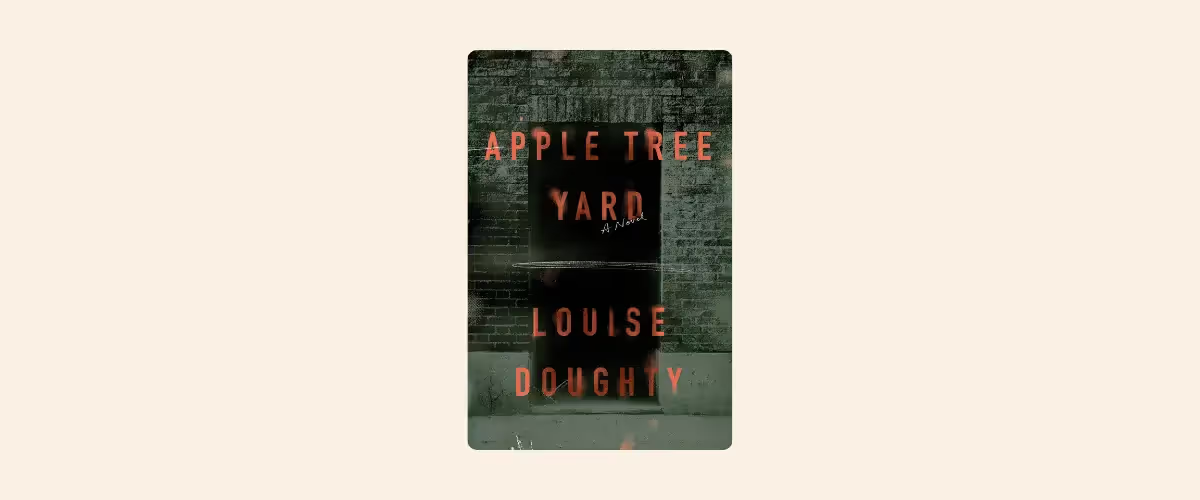
Thriller
Driving force: the antagonist
Example: Apple Tree Yard by Louise Doughty
An interesting twist on what you might expect. The plot is driven by the ‘bad guy’ (the rapist) but also the unknowability of Mr. X who, by dint of ‘joint enterprise,’ apparently assists our heroine in the management of the conflict vis-à-vis the ‘bad guy.’
Adding untrustworthy characters gives thriller authors the bonus-point adjective ‘psychological’ to their genre. The first-person treatment from the perspective of an unreliable narrator is another key component for the psychological subgenre, though not all thrillers do this.
The purpose of the antagonist is to reveal the true nature of the hero, but in a psychological thriller, who’s good and who’s bad is much more flexible. How about an antagonist who is a nuisance but a goodly person, who reveals our hero as not so noble...? Because that’s concerned with morality, it’s literary. (See below.)
Note, too, that the distinction between thriller and crime is that the crime has not yet taken place.
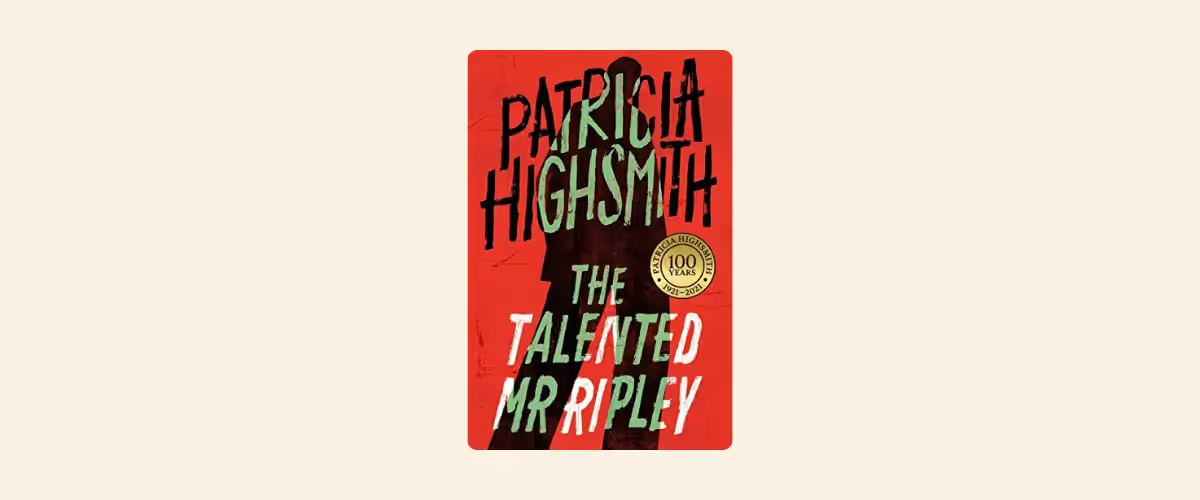
Crime
Driving force: murder and morality
Example: The Godfather by Mario Puzo
Example: The Talented Mr. Ripley by Patricia Highsmith
Both novels depend upon the wanton—almost callow—disposability of human life, but there is nonetheless sympathy for the devil. The Godfather, Don Corleone, and his son, Michael, have values. Their values are such that they consider these to be a higher purpose than the accident of life. In The Talented Mr. Ripley, Tom Ripley has values too.
It’s a classic story of someone who starts off down on his luck and disregarded, but who, through force of personality, hard work and sheer determination, manages to make something of himself. (He is)... polite, self-effacing, hard working. He is endearingly shy in company and worried about the impression he makes on others. He is always assessing himself, always trying to improve. He can do wonderful imitations. He escapes from horrible scrapes with flair and elan. He has a brave taste for adventure, for putting himself in difficult situations and foreign landscapes. Oh, and he is a very good tipper. Good old Tom—what’s not to like? Well, I suppose there is the fact that he is a cold-blooded killer. It isn’t very nice when he batters Greenleaf Jr. to death. Truth be told, it’s rather an awkward moment.
—Sam Jordison, Guardian
The driving force here is the likable killer. In most whodunnits, the killer is not the foul-mouthed, uncouth swine but the pleasing, amenable character.
And that’s not just a device to trick the reader. The likability of the murderer drives a long-form story more surely than his or her hatefulness. That would be an awfully short story.
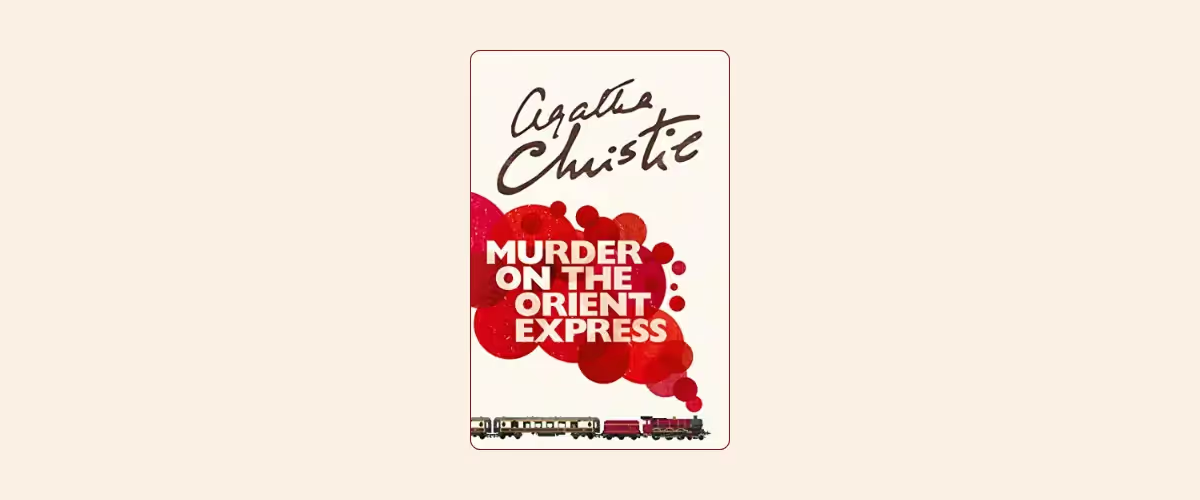
Detective fiction
Driving force: natural justice and order prevail
Example: Murder on the Orient Express by Agatha Christie
The crime novel was described by Dorothy Sayers as ‘the literature of escape.’ Bestselling author of the new Poirot novels, Sophie Hannah, told our writers that its popularity is derived from one of the most fundamental aspects of the meaning of life, and a key driving force for staying alive:
We don’t know what will happen next!
The driving force of detective crime fiction falls on the heroism of the detective against the background of a life in which we don’t know what will happen next.
In everything that can be called art there is a quality of redemption. It may be pure tragedy, if it is high tragedy, and it may be pity and irony, and it may be the raucous laughter of the strong man. But down these mean streets a man must go who is not himself mean, who is neither tarnished nor afraid. The detective in this kind of story must be such a man. He is the hero, he is everything. He must be a complete man and a common man and yet an unusual man. He must be, to use a rather weathered phrase, a man of honor, by instinct, by inevitability, without thought of it, and certainly without saying it. He must be the best man in his world and a good enough man for any world. (...) If there were enough like him, I think the world would be a very safe place to live in, and yet not too dull to be worth living in.
—Raymond Chandler
So, the paradox afoot here is that an unsafe world has as its driving force a safe pair of hands. Try to compose one without the stoic hero? Not possible.
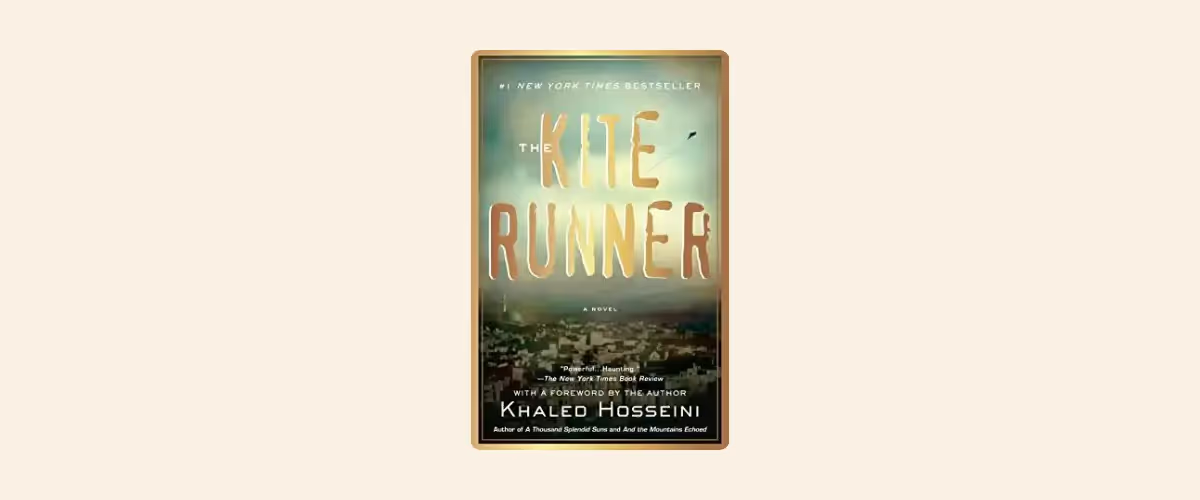
Historical fiction
Driving force: a contemporary or timeless social question
Example: Alias Grace by Margaret Atwood
Example: The Kite Runner by Khaled Hosseini
An author writing historical fiction is finding a way to say something about our current condition without writing non-fiction.
Historical fiction presents a ready-made world, and is selected as a locale in time and place as much for what is missing as what is there. In other words, the setting allows the author to present a parallel of a current situation in more stark relief, even when they draw on actual historical figures.
Thus, paradoxically, a historical novel (with the exception of a historical romance) is driven by events or conditions of the present time, despite the use of historical settings. Like Victor Hugo and Margaret Atwood, an author may have something to say about the ways in which we discriminate and segregate groups. They don’t need to contrive a new or alternative world to present these recurrent themes, as a simpler format pre-exists.
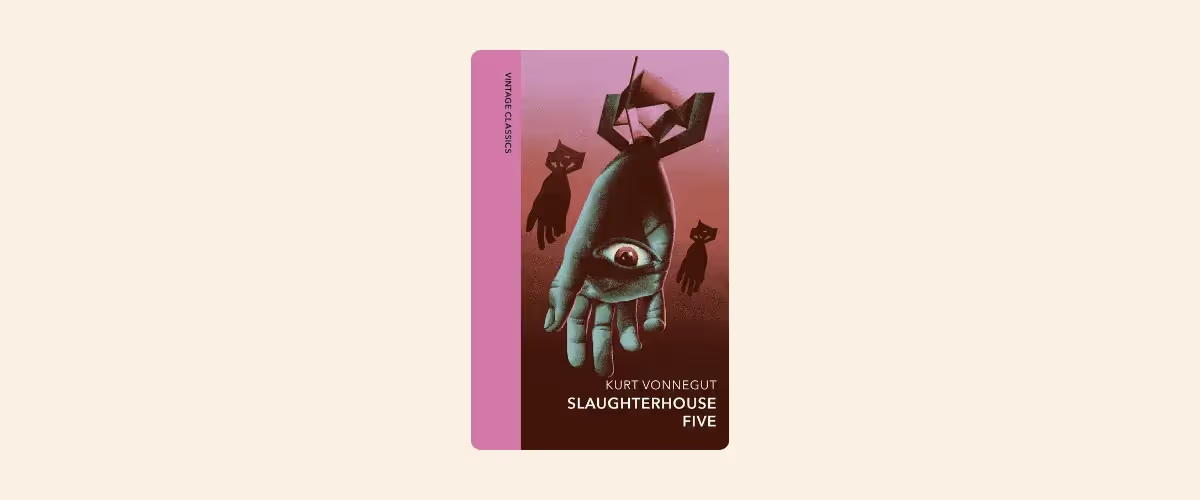
Science fiction
Driving force: inhumanity
Example: Slaughterhouse-Five by Kurt Vonnegut
Example: 1984 by George Orwell (also dystopian)
The purpose of a writer is to keep civilization from destroying itself.
—Albert Camus
Anything is better than the way we live now, says the science fiction writer. As with historical fiction, yet a shriller protest in the sense that science fiction demands imagining, and enacting, the future now.
The author’s intention is clairvoyance. What lies ahead of us? Beware—a warning shot.
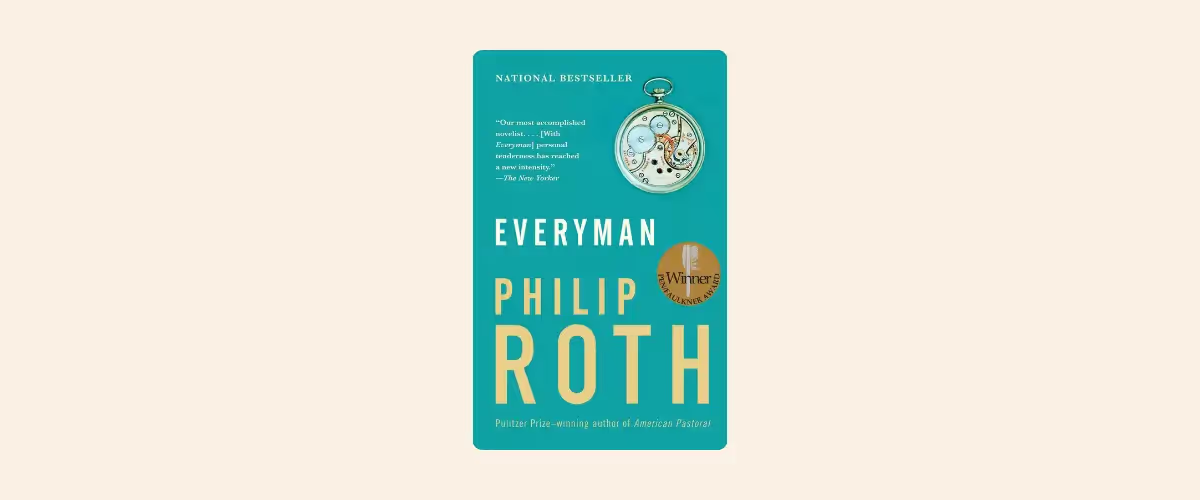
Literary fiction
Driving force: the moral or spiritual quest
Example: Disgrace by J.M. Coetzee
Example: Everyman by Philip Roth
Example: The Good Soldier by Ford Madox Ford
A literary novel is concerned with a laser-sharp focus on the moral enterprise of the hero. It examines a person’s life, and how he or she becomes reconciled to their true place in the world.
They can be completely abased as much as exalted. The imaginary characters are yours to create.
The paradox here is that the driving force of the story is the spiritual standing gained as a result of worldly loss. Think A Christmas Carol—the loss confers a supreme blessing.
(The quest genre is driven by a material quest.)
.avif)
Up Lit
Driving force: well-being (happiness) driven by community action
Example: A Man Called Ove by Fredrik Backman
Example: Less by Andrew Sean Greer
From sad face to happy face in this popular genre—with a major kick up the butt delivered to our moping and miserable protagonist.
Impossible to imagine without good relations with humankind. A testament to community action, with plenty of comedic elements. Human behavior needn’t be such a cause for despair.
.avif)
Romance fiction
Driving force: a value choice
Example: Brooklyn by Colm Tóibín
Example: Pride and Prejudice by Jane Austen
As with Up Lit, the protagonist has given up on change, and yet it happens to them through the conduit of another person.
In Brooklyn, Eilis meets a handsome Italian-American man who speaks of marriage. A death summons her back to Ireland, where she finds that America has made her glamorous and desirable, and she faces a choice between the old life and the new.
Elizabeth Bennet had to choose between her pride and prejudice and broader-minded possibilities for true communion with another person. The romantic relationship represents much more.
A romantic novel has, as its paradox, that stability and peace are afforded by choice and change.
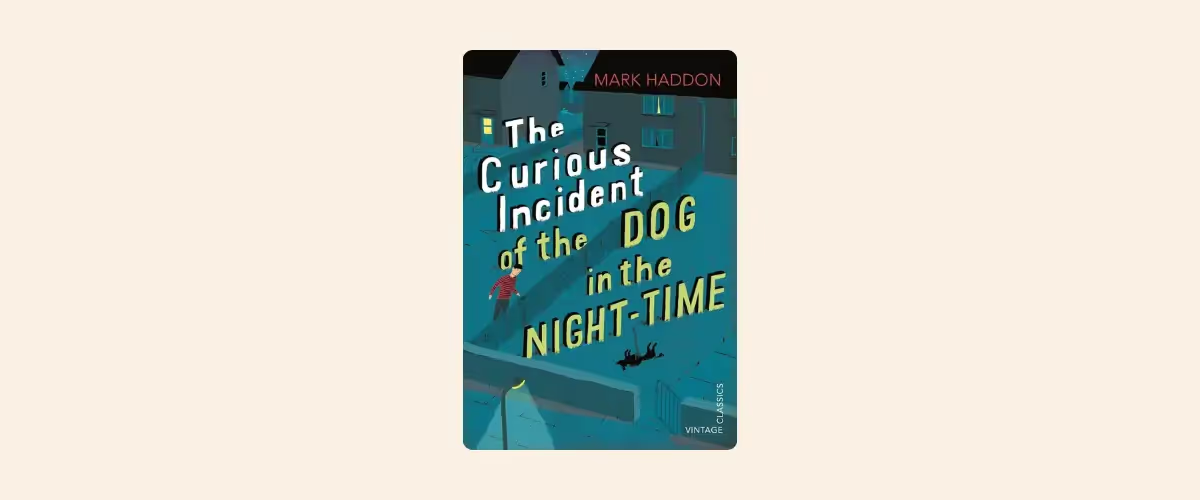
Bildungsroman
Driving force: the disappointment of adulthood
Example: The Curious Adventure of the Dog in the Night-Time by Mark Haddon
The novel explores, as does Bonjour Tristesse, a coming-of-age in which one’s hopes for the noblesse of the adult kind are dashed.
Although the bildungsroman can take many forms, the paradox at the heart of this genre is that the more mature human being is immature and hardly grown up at all. The author of this kind of literature warns the reader to go back, go back, and retreat into the better and more benevolent state of innocence.
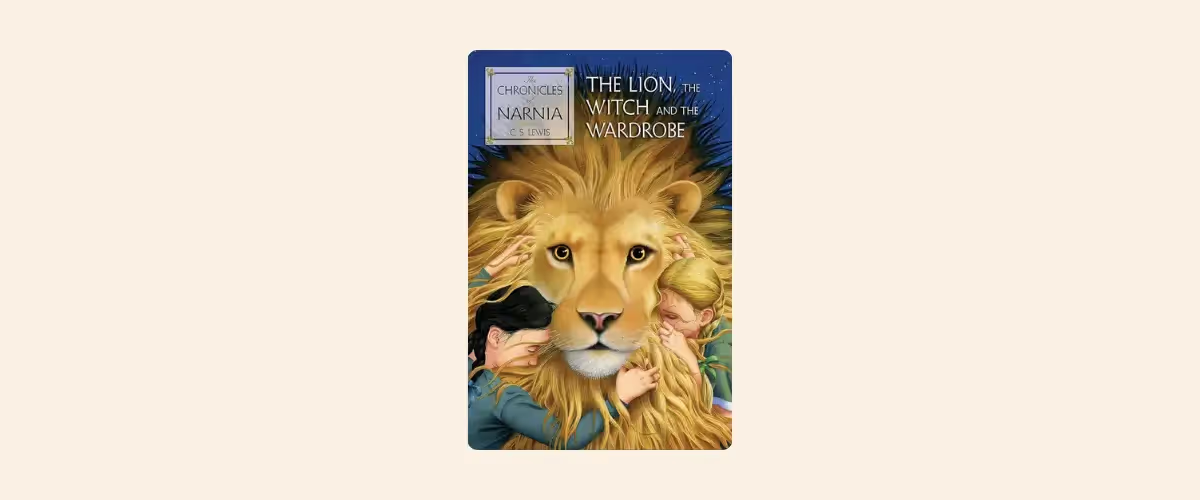
Fantasy fiction
Driving force: violent conflict
Example: The Lion, the Witch and the Wardrobe by C.S. Lewis
When push comes to shove, as it must in fantasy, there will be blood.
There are plenty of imagined elements along the way, with each fantasy author developing their own style and often dreaming up fantastical magical creatures.
Conflict between good and evil may be delayed by foul, fair, or magical elements but, eventually, there will be a fleshy sacrifice. Nobility bows its head on the battlefield and takes the fatal blow.
But don’t worry, the swaggering heroes will be there for the sequel, as will the ‘real’ bad guys.
You can blend book genres
You can, of course, combine more than one genre—knowingly. You don’t want to do so unknowingly, and by writing for everyone and anyone, fail to please anybody!
You need to know from the outset what you’re writing and why. It’s perfectly okay to write ‘crossover’ fiction and name your mash-up (ideally, no more than two genres). Considering how many book genres exist, this flexibility allows for endless creative possibilities.
It may be that your novel contains elements of different genres—just because you’re writing a thriller doesn’t mean that your main character can’t become involved in a tangled romantic relationship, for example. Consider how you would describe your story—which elements would you pick out as the most important, the ones you want the reader to be following most closely? Use that answer as a guide when picking your genre—everything else is there to bulk up your story and give it color.
—Tash Barsby
Other genres
Graphic novel
Graphic novels have surged in popularity, captivating readers with their unique blend of visual and textual storytelling. These book-length narratives combine illustrations and text to convey complex stories, making them a versatile and engaging genre. They span a wide range of topics, from superheroes and science fiction to historical events and personal memoirs.
Graphic novels often feature comic strip-style panels, full-page illustrations, and a mix of dialogue and narrative text. They require a collaborative effort between writers and illustrators, as the visual elements are integral to the storytelling. The result is a rich, immersive experience that appeals to readers who enjoy visual storytelling.
Notable examples include Maus by Art Spiegelman, a powerful depiction of the Holocaust through the lens of anthropomorphic characters, Persepolis by Marjane Satrapi, an autobiographical account of growing up during the Iranian Revolution, and Watchmen by Alan Moore and Dave Gibbons, a groundbreaking work that deconstructs the superhero genre.
Short story
Short stories are a beloved genre for readers who appreciate concise, self-contained narratives that can be enjoyed in a single sitting. Typically ranging from 1,000 to 20,000 words, short stories focus on a single plot, character, or theme, delivering a powerful impact in a brief format. This genre is known for its ability to capture the essence of a moment, emotion or idea with precision and clarity.
Short stories can be found in various styles, from realistic to speculative fiction, and are often published individually or collected in anthologies. These collections offer readers a diverse range of voices, styles, and themes, making them a popular choice for those who enjoy exploring different narrative approaches and discovering new authors.
Classic examples of short stories include The Lottery by Shirley Jackson, a chilling tale of societal norms and human behavior, The Tell-Tale Heart by Edgar Allan Poe, a masterful exploration of guilt and madness, and A Good Man Is Hard to Find by Flannery O’Connor, a story that delves into themes of morality and redemption.
Take your book genre seriously before you start writing!
By understanding the unique characteristics and appeal of all of these fiction, non-fiction, and other genres, writers can better navigate the literary landscape and create compelling works that resonate with readers.
Consider what’s driving your story before you start, and you won’t go too far wrong.
When you start writing a novel you need to know two things:
- What the reader’s reading your book to find out
- The driving force of your story as appropriate to your genre
Nail them, and you are well begun! Next, you need to write the novel... And as it happens, you’re in exactly the right place for that.
Welcome home, writers. Join us on the world’s best creative writing courses to create, write and complete your book. Sign up and start today.

.avif)

.avif)
.webp)
.webp)
.webp)